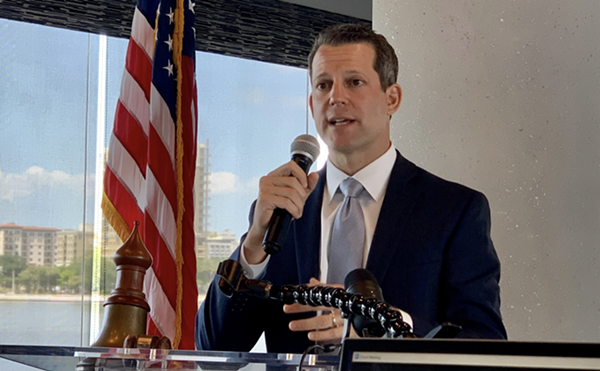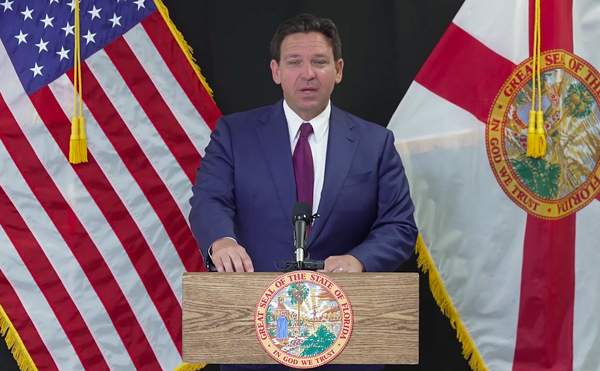The meeting began with HART COO Katherine Eagan giving a presentation on the pros and cons of a partnership as spelled out in the report. PSTA's CEO Brad Miller then took the stage, and in his usual exuberant way, immediately shot down previously voiced criticisms of a potential merger, including the notion that it wouldn't save money.
The study said the financial implications of a formal partnership would add up to more than $1 million, but the annual savings could go up as high as $2.4 million. Miller said that might not be the final number, but that "the number is not zero. It is north of zero."
HART's CEO Philip Hale followed Miller, and said a partnership would save costs. However he added that his experience at another agency where a merger occurred didn't create any magical savings.
"There were positives and negatives on both sides," he said.
The report suggested different scenarios in which the agencies could unite, with the consensus forming around the possibility of a Joint Power Agreement. A Joint Power Agreement would keep both HART and PSTA around legally, but only on paper. The JPA is where the staff would be housed, and where all the action of a combined agency would take place.
Miller said a board operating under a Joint Power Agreement would meet regularly, but the HART and PSTA agencies would not.
Once the discussion was open for board members from both agencies to weigh in, doubts immediately surfaced from the Hillsborough side of the room. This is not surprising as several board members in the past have criticized the push for such a merger. The idea of a merger has been led by Clearwater state Sen. Jack Latvala, who has always claimed that the agencies could save money by coming together.
When it was his turn to speak, the senator disputed the notion of minimal savings from a legal partnership, saying the savings could be far greater than the $2.4 million estimated in the report.
"It doesn't include any consultants or outside contractors," he said. "Likewise, I know both agencies have lobbyists, have CPA's. You haven't added those totals to the prospective savings."
He then went on to say that because both agencies were tapped out of funding sources, it only made sense to come together.
"Business merges to save money. That's how big corporations do it," he said.
Later Latvala referred to Pinellas' plan to put a sales tax measure on the ballot in 2014, which would bring in the funding to build a light-rail station, initially running from Clearwater to St. Petersburg. He said the light-rail would ultimately be considered a bust unless it ran from Pinellas to Hillsborough, and thus articulated his larger idea that such a system could only be effective with a transit agency that represented both sides of Tampa Bay.
"If we're going to have a regional system, we need to have a regional authority. I think the Joint Power Agreement is an alternative to that," he said.
Pinellas County Commissioner Susan Latvala said she thought both boards needed to move forward, but wasn't sure how that would happen.
"You can't get there, next week, next month, next year. It is a very long process," she said.
HART Board Chair Fran Davin said one thing she thought would come out of the consultant's report was how her agency could get more funding, but she was shot down by HART attorney David Smith, who said "the study didn't address that. We're not specifically adding funding."
HART board member Karen Jaroch said, "I would look toward the informal partnerships, but if we have to dissolve our agencies, I don't think that serves our constituents of our voters well."
Ultimately, Murman called for a motion that would direct the state Legislature to fund what is being called a "desk audit" if specified staff resources were combined. Her motion also called to keep the joint committee working on better ways to serve riders on both sides of Tampa Bay, and for both agencies to come up with a strategic coordination plan.
This led to a surfeit of negative comments from HART members like Jaroch and John Melendez. After a lengthy debate amongst the Hillsborough board members, Murman's motion get passed 6-5. PSTA Chair Jeff Danner called for a vote from his members, who immediately approved it unanimously.















